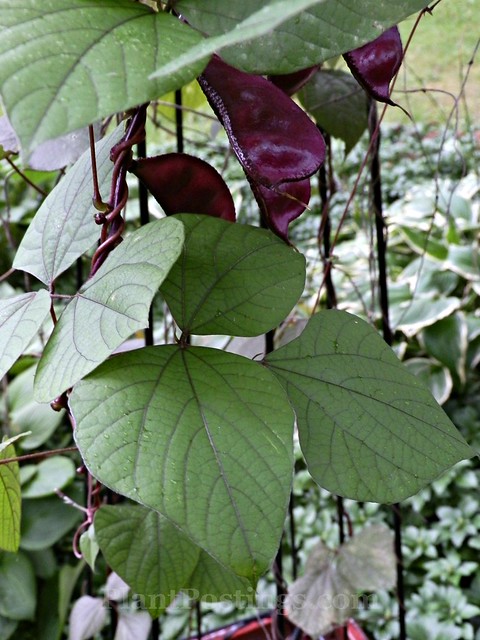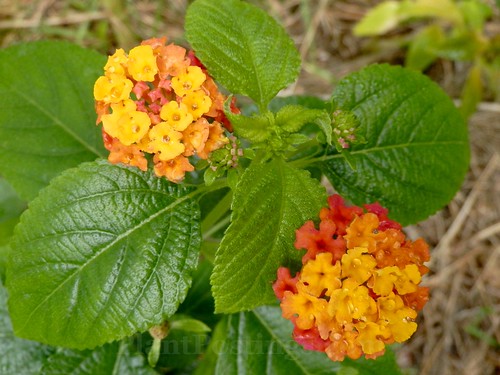 |
| One of Rose's favorite Zinnias: 'Zowie! Yellow Flame', which I'd like to add to my potager garden next year. |
In mid-September, I had the pleasure of meeting Rose from Prairie Rose's Garden and her friend, Beckie, at Rotary Botanical Gardens in Janesville, Wis.
 |
| Beckie (l) and Rose (r), gearing up for our garden tour. |
It seemed like old times (for me, at least) even though we'd never met in person before. Some friends are like that--you feel like you've known them forever and that you can pick up where you left off when you meet again.
Anyway, it was a cool day and slightly overcast, but we didn't let that deter us from enjoying the gardens. The Rotary Botanical Gardens are celebrating their 25th anniversary this year, and you can read about their fascinating history by clicking on this link. I haven't been to these gardens much, which is embarrasing because Janesville is only about 36 miles from my home.
 |
| Beckie suggested stepping up to the terrace overlook to photograph this long shot of the European-style gardens, which was a great idea. Thanks, Beckie! |
The 20-acre, nonprofit botanic garden has numerous themed gardens, and the first one you see as you exit the visitor center is the English Cottage Garden. As you look across from above, you also can see the Italian Garden, the French Rose Garden, and beyond.

The obelisks, arbors, and other hardscapes are great frames for the whimsical mixes of annuals, perennials, and ornamental shrubs.

One of the seasonal displays incorporates the use of doors and windows with a fabulous mix of tall plants.

The Japanese Garden--one of the first Rotary gardens built after the founding--has been recognized as one of the top 25 Japanese gardens in North America, by the Roth Journal of Japanese Gardening.

I remarked to Rose and Beckie that I felt calmer when I stepped into this section of the botanical garden, which of course is intentional. The use of foliage, form, and hardscapes is artfully done.

Hakone grass (Hakonechloa macra) flowing out of the crevices of a rock wall. Wow! This is fabulous. It's a big wall and the effect is dramatic.

Looking across the pond at the Japanese Arched Bridge.



Scattered throughout the property are these convenient benches with great quotes aboout gardening.

Other seating areas invite visitors to sit, relax, and contemplate the beauty.

Another highlight is the Thomas Jefferson Collection. One of my favorite gardening friends (you know who you are) is a big fan of Balsam (Impatiens balsamina), which surrounds the sign in a rainbow of colors.

The Thomas Jefferson collection includes a great sampling of vegetables, flowers, and herbs that our third president favored at Monticello, his Virginia home--including this heirloom Tomato.

Various vining plants, like this Sweet Pea (Lathyrus odoratus 'Painted Lady'), are trained on trellises made of wooden branches, for a lovely effect.

Thomas Jefferson's vegetables, including this Eggplant, are also favored by the bumblebees.

Also scattered throughout the gardens are beautiful mixed plantings of annuals and perennials, with stunning combinations of foliage and blooms of various colors, forms, and heights.


More benches for enjoying the displays.


It's encouraging to see Milkweeds of various species forming their seedheads for next year's plants, including Butterfly Weed (Asclepias tuberosa) and Swamp Milkweed (A. incarnata).
Other plants that caught my eye included:

Korean Feather Reed Grass (Calamagrostis brachytricha);

Variegated Obedient Plant (Physostegia virginiana 'Variegata');

And this sweet potted Celosia (C. plumosa 'Fresh Look Gold'), surrounded by various perennials and annuals.
Those are just a few of the highlights. We had a great time, and the Rotary Botanical Gardens were in prime early autumn condition. I'm hoping we can organize more Midwest gardener and blogger meet-ups in the months ahead. Thanks, Rose and Beckie!

























